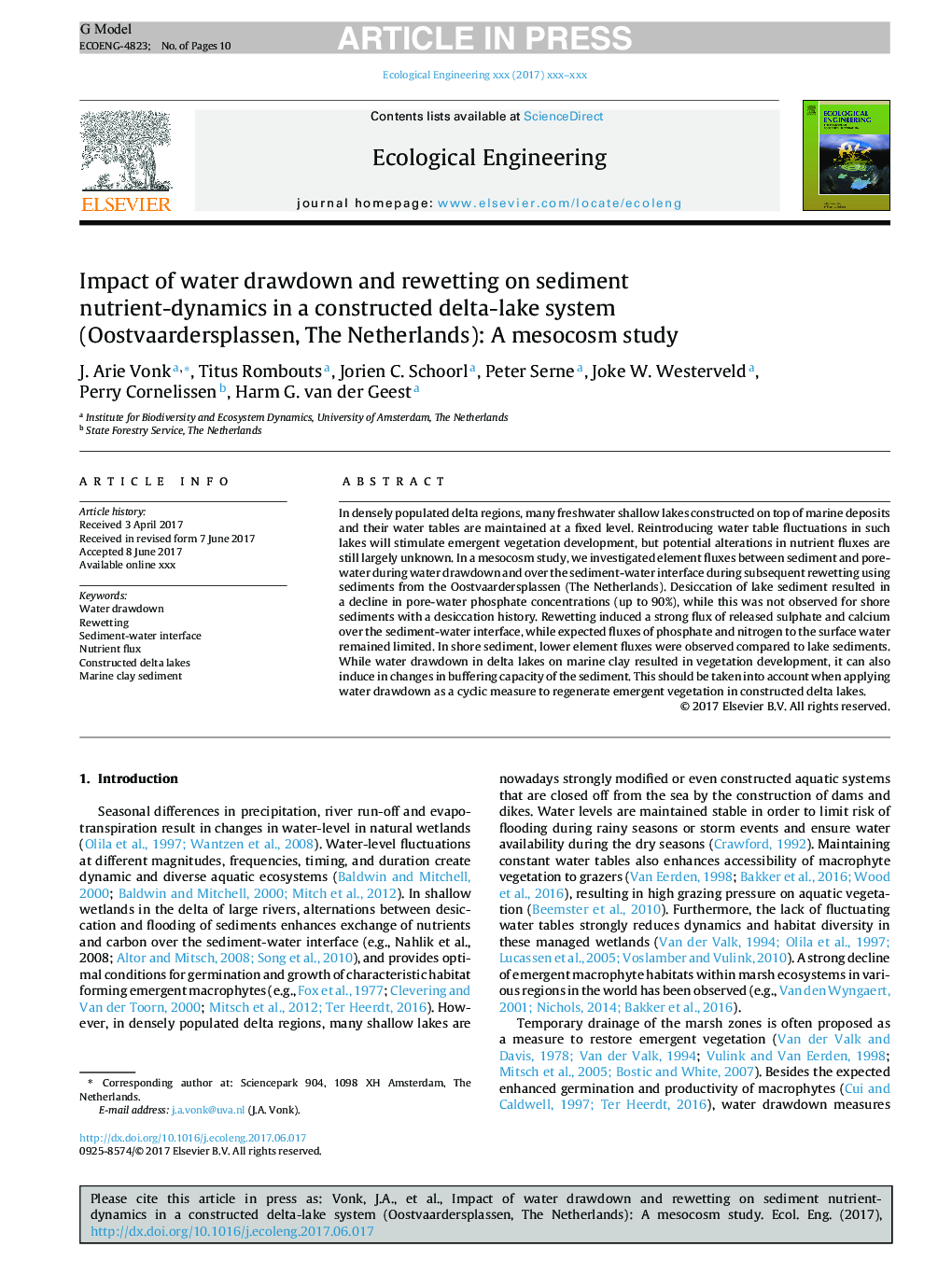| Article ID | Journal | Published Year | Pages | File Type |
|---|---|---|---|---|
| 8848175 | Ecological Engineering | 2017 | 10 Pages |
Abstract
In densely populated delta regions, many freshwater shallow lakes constructed on top of marine deposits and their water tables are maintained at a fixed level. Reintroducing water table fluctuations in such lakes will stimulate emergent vegetation development, but potential alterations in nutrient fluxes are still largely unknown. In a mesocosm study, we investigated element fluxes between sediment and pore-water during water drawdown and over the sediment-water interface during subsequent rewetting using sediments from the Oostvaardersplassen (The Netherlands). Desiccation of lake sediment resulted in a decline in pore-water phosphate concentrations (up to 90%), while this was not observed for shore sediments with a desiccation history. Rewetting induced a strong flux of released sulphate and calcium over the sediment-water interface, while expected fluxes of phosphate and nitrogen to the surface water remained limited. In shore sediment, lower element fluxes were observed compared to lake sediments. While water drawdown in delta lakes on marine clay resulted in vegetation development, it can also induce in changes in buffering capacity of the sediment. This should be taken into account when applying water drawdown as a cyclic measure to regenerate emergent vegetation in constructed delta lakes.
Related Topics
Life Sciences
Agricultural and Biological Sciences
Ecology, Evolution, Behavior and Systematics
Authors
J. Arie Vonk, Titus Rombouts, Jorien C. Schoorl, Peter Serne, Joke W. Westerveld, Perry Cornelissen, Harm G. van der Geest,
